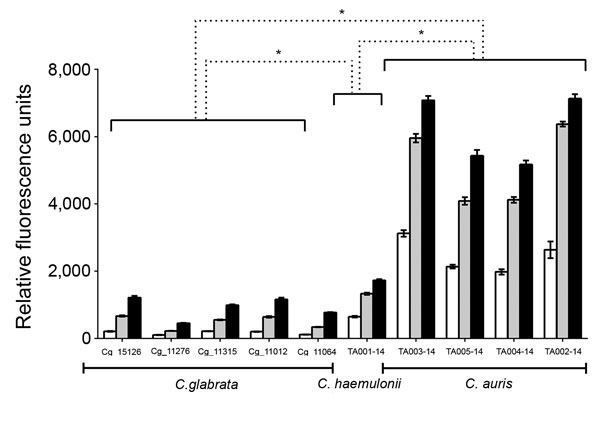Volume 23, Number 2—February 2017
CME ACTIVITY - Research
Multidrug-Resistant Candida haemulonii and C. auris, Tel Aviv, Israel
Figure 2

Figure 2. Comparison of rhodamine 6G efflux over time among Candida isolates from Tel Aviv, Israel. Rhodamine 6G efflux is expressed as relative fluorescence units measured in culture supernatants after the addition of 8 mM glucose. Statistical significance was measured with 1-way analysis of variance and Dunnett’s post-test comparing each C. haemulonii and C. auris strain with the averaged value of C. glabrata strains at the corresponding time point. White bars, 5 min; gray bars, 15 min; black bars, 25 min. *p<0.0001.
Page created: January 12, 2017
Page updated: January 12, 2017
Page reviewed: January 12, 2017
The conclusions, findings, and opinions expressed by authors contributing to this journal do not necessarily reflect the official position of the U.S. Department of Health and Human Services, the Public Health Service, the Centers for Disease Control and Prevention, or the authors' affiliated institutions. Use of trade names is for identification only and does not imply endorsement by any of the groups named above.